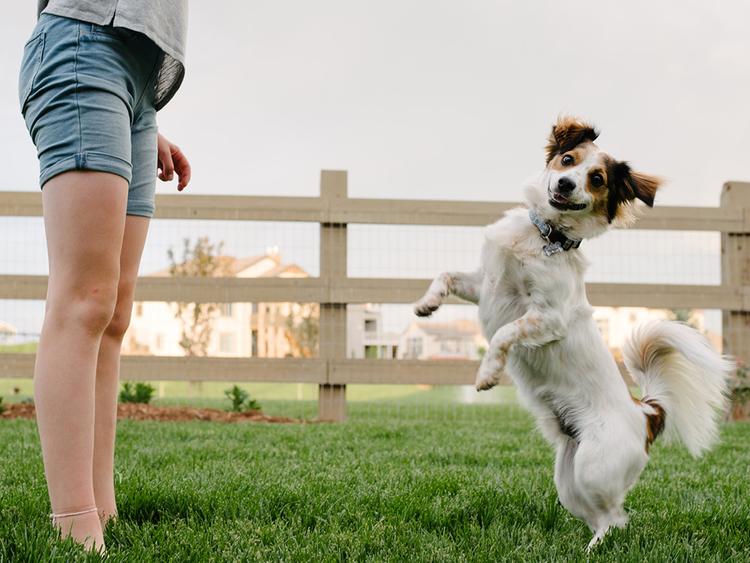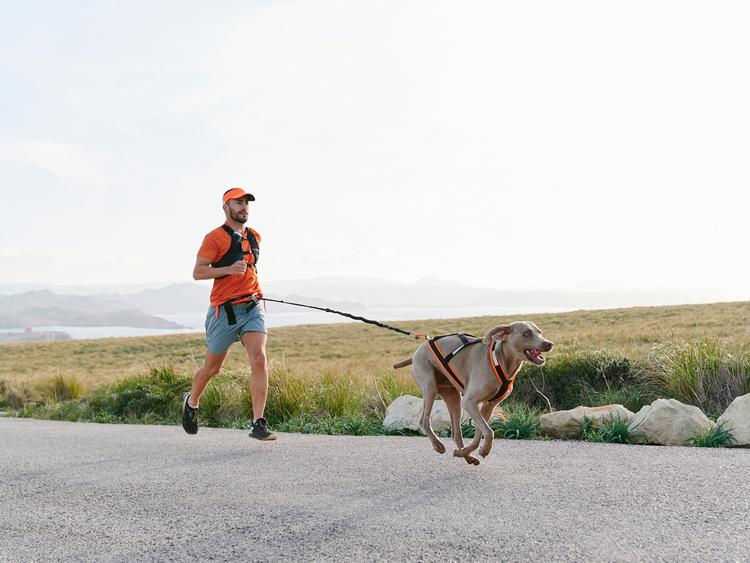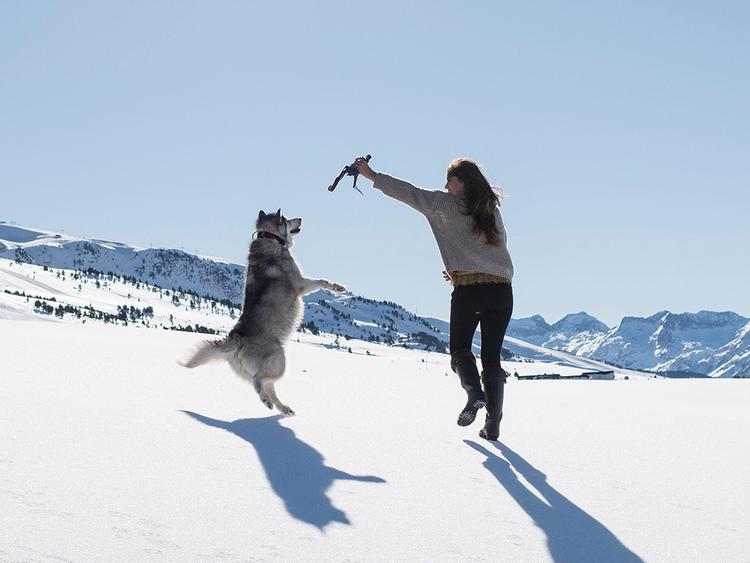by Alicia Kort, | May 2, 2024
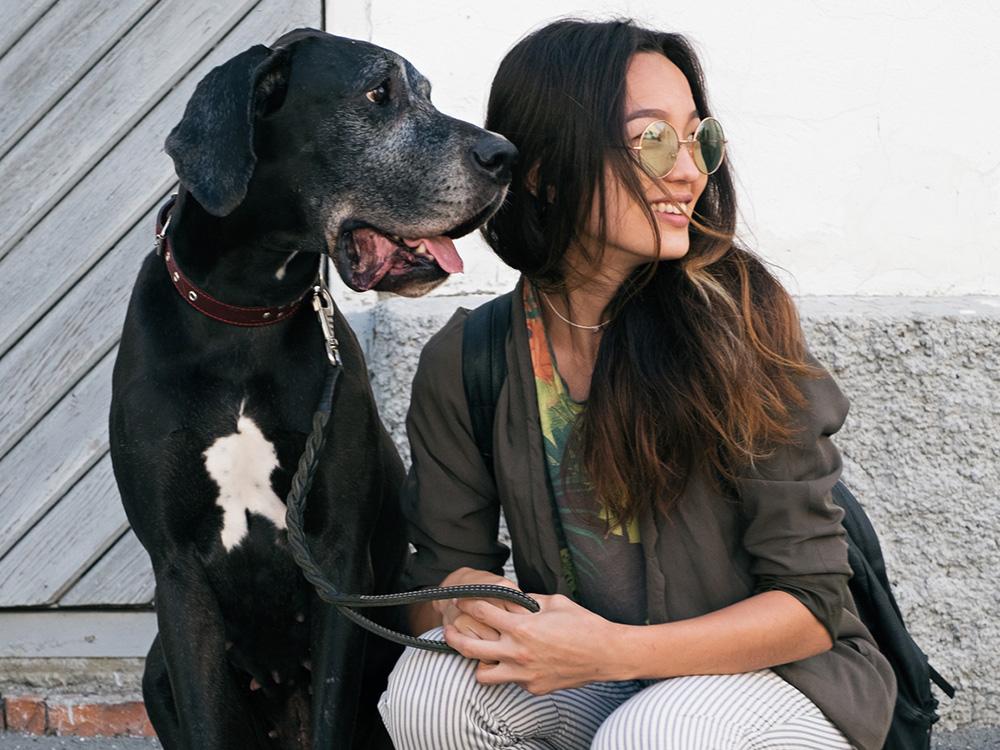
Danil Nevsky / Stocksy
Don't let their size fool you: Not only do big dog breeds make great companions, but many are gentle giants. Most will need plenty of exercise, but many love to spend time cuddling on a (huge) couch as well.
What's considered a giant dog? Well, most agree that a dog should weigh 90 pounds or more to be considered a giant breed. All of the dogs on this list are seriously big: they start at 100 pounds and reach up to 230 pounds. Many are taller than a human when they stand on their hind legs. These larger-than-life canine companions have a variety of temperaments and lifestyle needs. From the surprisingly adaptable Great Dane to the calm and gentle Saint Bernard, you're sure to find a giant breed for you.
If you’re ready to adopt a gentle giant, read on to learn more about the biggest dog breeds, including their attributes and exercise requirements. If tiny pups are more your style, check out these small, medium, and smaller large dog breeds instead.
Meet these super-sized dog breeds
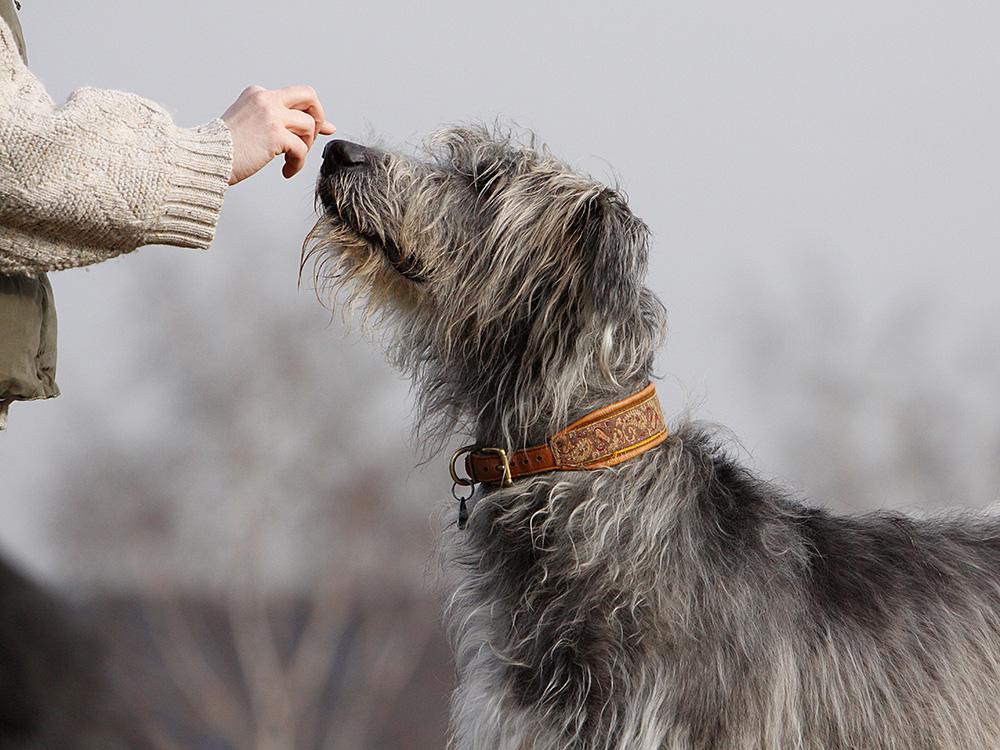
Danita Delimont / Alamy Stock Photo
1. Irish Wolfhounds
If you've ever encountered an Irish Wolfhound in person, you might have done a double-take to confirm that your neighbor isn't walking a wolf on a leash. These dogs weigh up to 120 pounds and stand up to 32 inches tall at the shoulder, but despite their size, they are gentle and laid-back adult dogs. When they are puppies, they need frequent exercise and a fenced-in yard because they are so attuned to hunting prey that they shouldn't be allowed to wander off-leash. The Irish Wolfhound has a wiry outer coat and a soft undercoat that needs to be brushed weekly. Unlike other double-coated dog breeds, they don't need their coat blown out; it stays put year-round.
Weight: 110 to 180 pounds
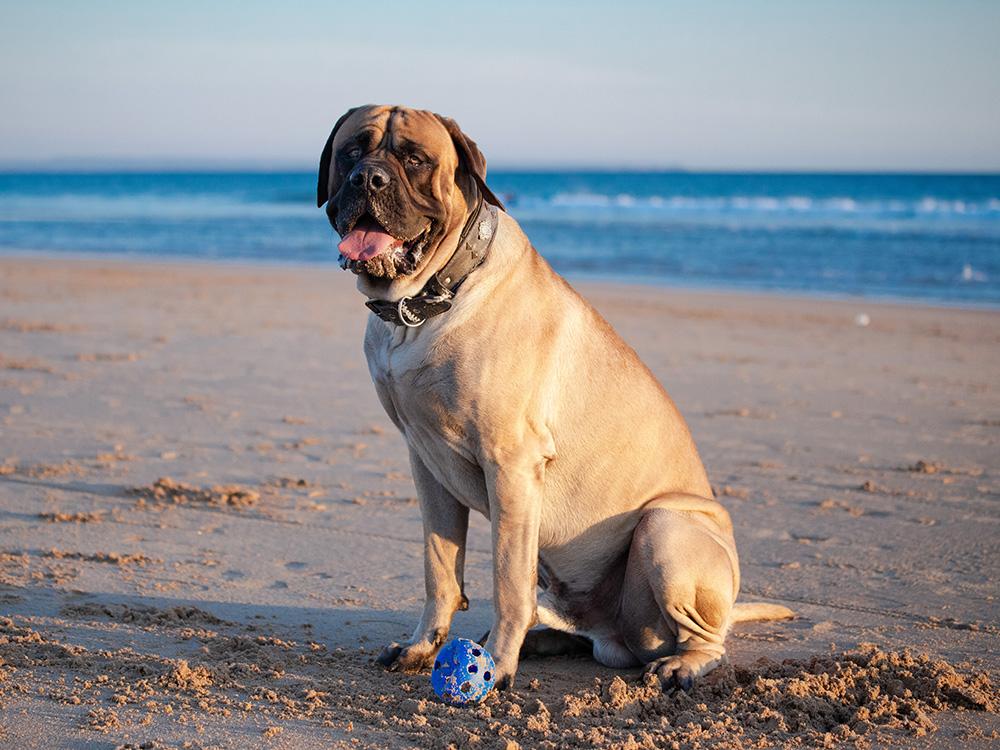
Monica Arauz / Shutterstock
2. Mastiff
The Mastiff is by far the biggest dog on this list: This breed can reach up to 230 pounds and stand up to 36 inches. This huge, loyal pal is gentle to friends and family, though they can be wary of strangers, so they should be socialized early. They are affectionate, though sometimes they aren't entirely aware of how big they are. It's important to note that Mastiffs should be monitored as puppies and young adults because jumping from the heights they can reach could result in broken bones. Adult Mastiffs require just one good walk daily. Despite their short coats, they shed twice a year and require regular brushing. Their wrinkles also need to be cleaned, and you'll want to keep a drool cloth on hand to mop yourself (and your floor) up.
Weight: 175 to 230 pounds
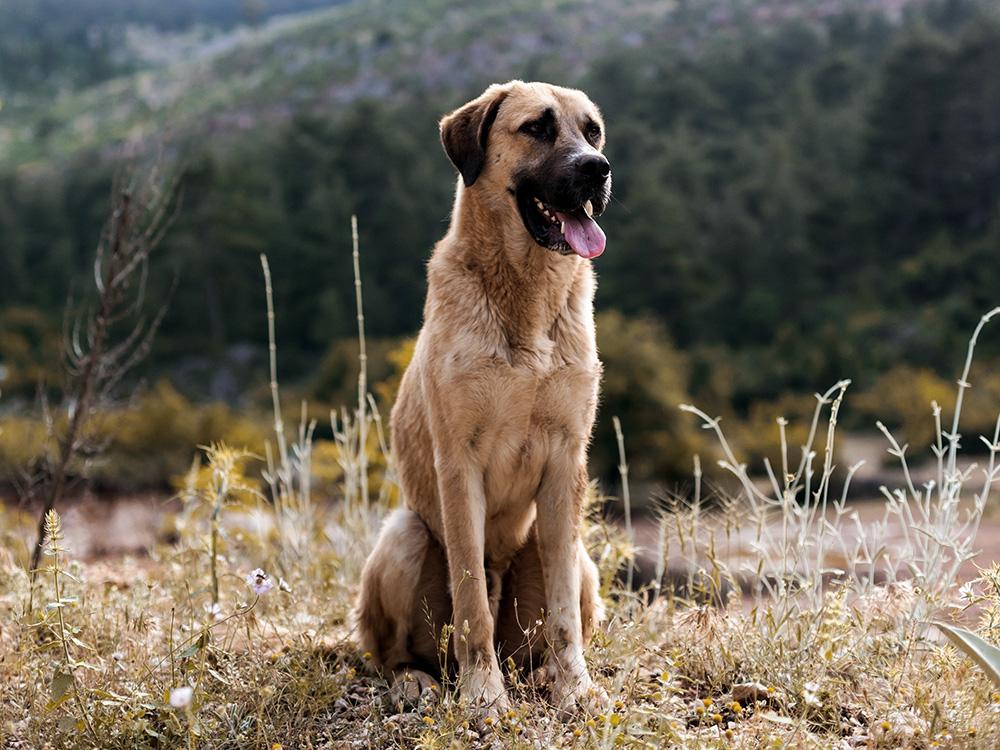
zhukovvvlad / Shutterstock
3. Anatolian Shepherd Dog
Anatolian Shepherd Dogs are an ancient breed; these huge dogs, who stand up to 29 inches tall at shoulder height and weigh up to 150 pounds, have been guarding livestock for thousands of years. It's unsurprising, therefore, that these huge dogs still have a protective streak. They are wary of strangers, stubborn, and used to being lone wolves, so it's important to socialize and train them when they're puppies. Anatolians need plenty of exercise but are capable of relaxing in their homes when they believe they're off-duty. Their double-layered coats should be brushed weekly and shed heavily twice a year.
Weight: 100 to 150 pounds
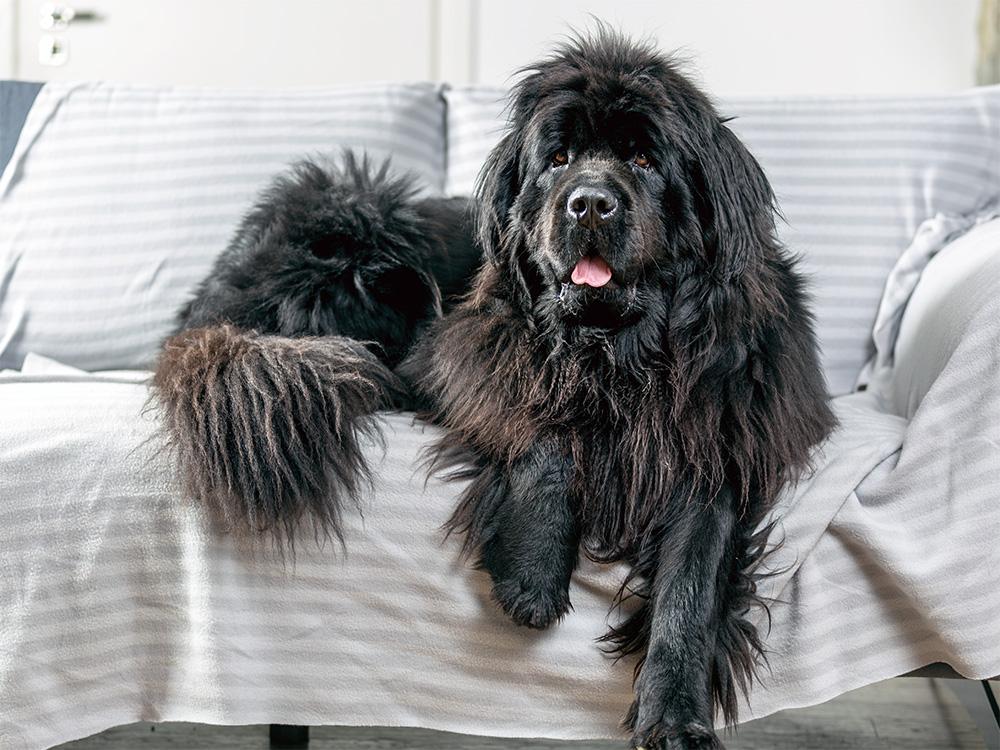
rzoze19 / Shutterstock
4. Newfoundland
The Newfoundland is another example of a gentle giant; this drooly pup weighs up to 150 pounds and reaches, but is known for being great with children and seniors because they are supremely patient and sweet-tempered. Boasting soulful eyes and a big nose, this shaggy dog can have brown, black, black and white, or gray coats. They need about 30 minutes of exercise per day, which can involve pulling kids in carts, swimming, or hiking. The Newfoundland, if spayed or neutered (which is recommended), will shed all year and require regular brushing.
Weight: 110 to 150 pounds
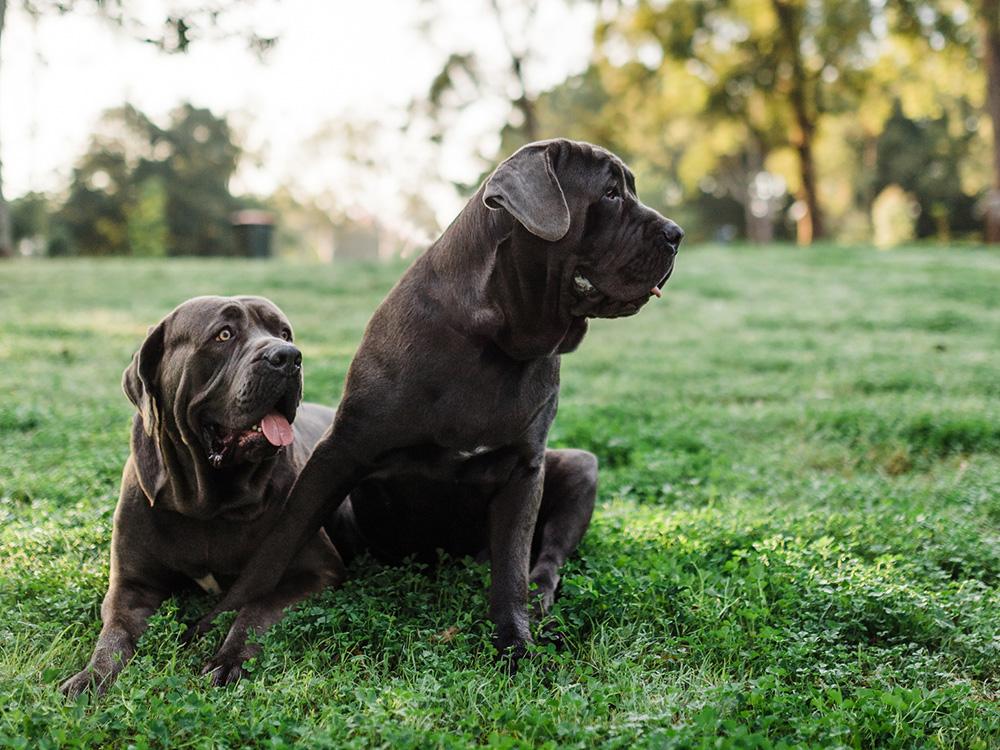
Samantha Gehrmann / Stocksy
5. Neapolitan Mastiff
The Neapolitan Mastiff is a massive pup — they can reach 150 pounds and 31 inches at shoulder height — famous for their magnificent hanging wrinkles, constant drool, and permanent hangdog expression. This breed was originally a guard dog, but this gentle, patient pup is now more than happy to hang out with their family at home. The Neapolitan Mastiff has fragile joints, so pet parents should avoid play that involves a lot of fast turns or jolts and overheats easily. Their coat is very low-maintenance, however, because they are short-haired; they only require the occasional bath.
Weight: 110-150 pounds
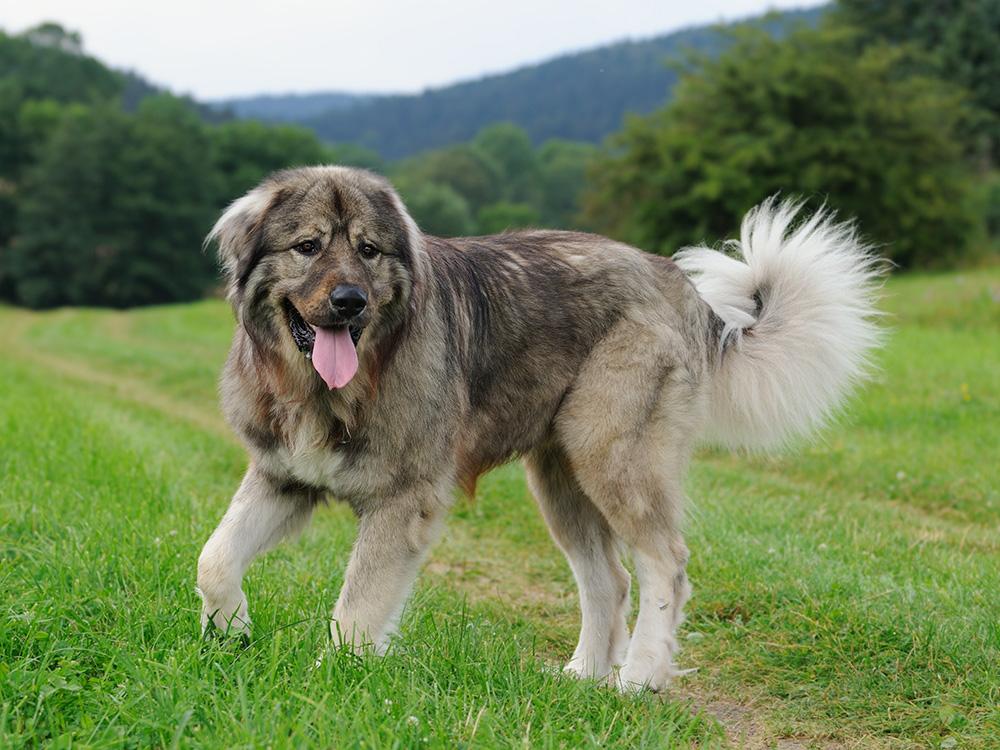
anetapics / Shutterstock
6. Caucasian Shepherd Dog
Although this fluffy, sweet-eyed pup might seem like a giant teddy bear, the Caucasian Shepherd Dog was originally bred to guard livestock and fight off predators. Because of this protective past, the Caucasian Shepherd Dog is best for people who have had dogs before and have a ton of fenced space for them to wander around. Though they can weigh as much as 170 pounds and be as tall as 30 inches at shoulder height, these dogs are relatively low-energy compared to the other dogs on this list and are content with long walks and hikes. There are two types of Caucasian Shepherd Dogs: The Mountain type, which boasts a longer coat and heavier build, and the Steppe Type, which has a lighter coat and slighter build.
Weight: 100 to 170 pounds
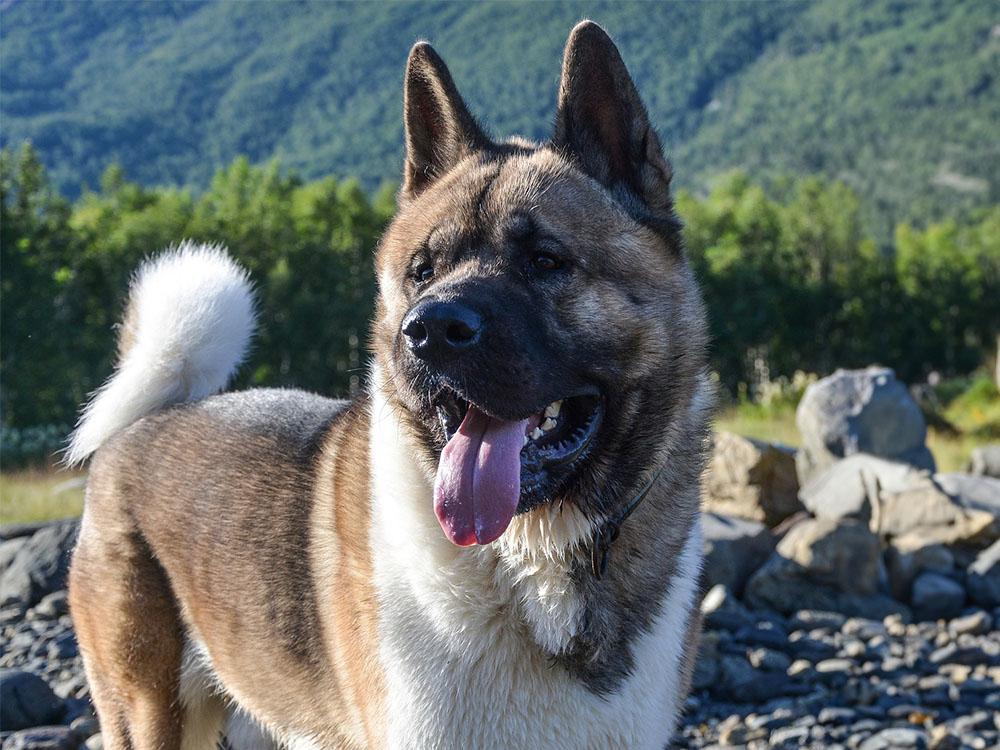
monicore / Pixabay
7. American Akita
American Akitas resemble giant stuffed animals; these Japanese dogs sport fluffy double coats and upright curled tails, can weigh up to 130 pounds, and stand up to 28 inches tall at the shoulder. Although the Akita is considered a loyal dog and family companion, they can be suspicious and guarded around strangers. Due to their protective nature, this pup doesn't tolerate other pets well and needs to be socialized from birth with humans. The Akita is a moderately active dog and requires a brisk walk and some playtime every day.
Weight: 100 to 130 pounds
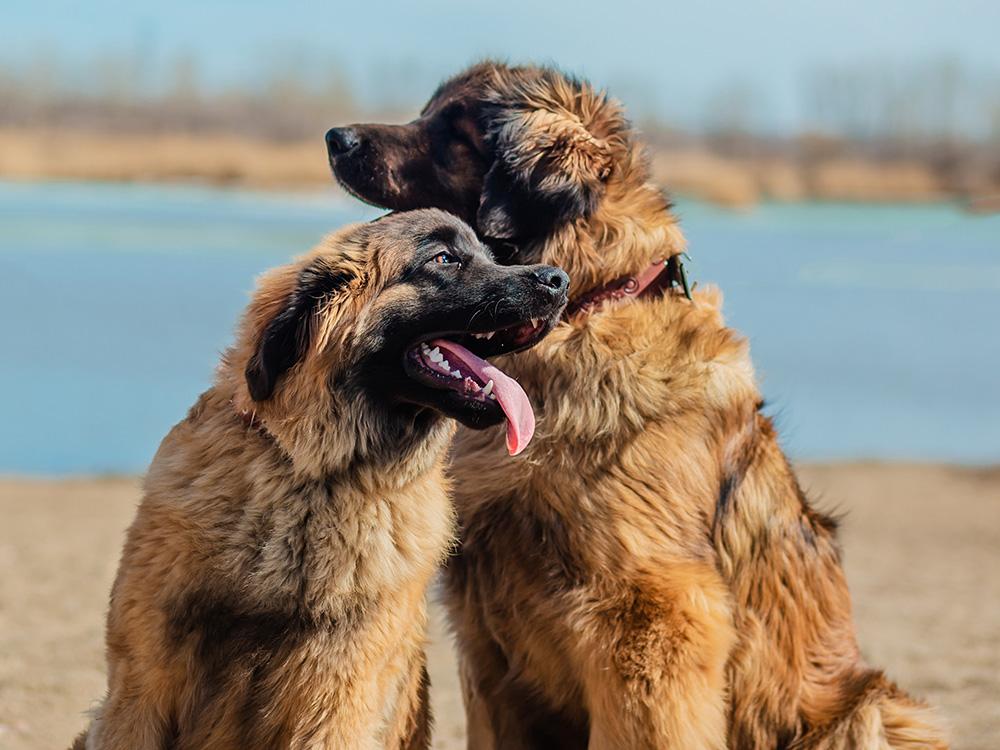
VeronArt16 / Shutterstock
8. Leonberger
The Leonberger resembles a bear more than any other dog on this list. This big dog can weigh up to 170 pounds and reach 31.5 inches at shoulder height but is filled to the brim with love and affection. The Leonberger, also called the "Leo," is a sweet pup whose disposition makes them a great companion for families with kids. Although they are relatively calm dogs, Leonbergers still need a lot of exercise — especially in their puppy or adolescent stage — preferably in a fenced-in yard. Known for their beautiful, soft coat of fur, the Leo has to be brushed every day and also goes through two major shedding seasons, so pet parents should be prepared for the amount of energy and time that will go into grooming them.
Weight: 110 to 170 pounds
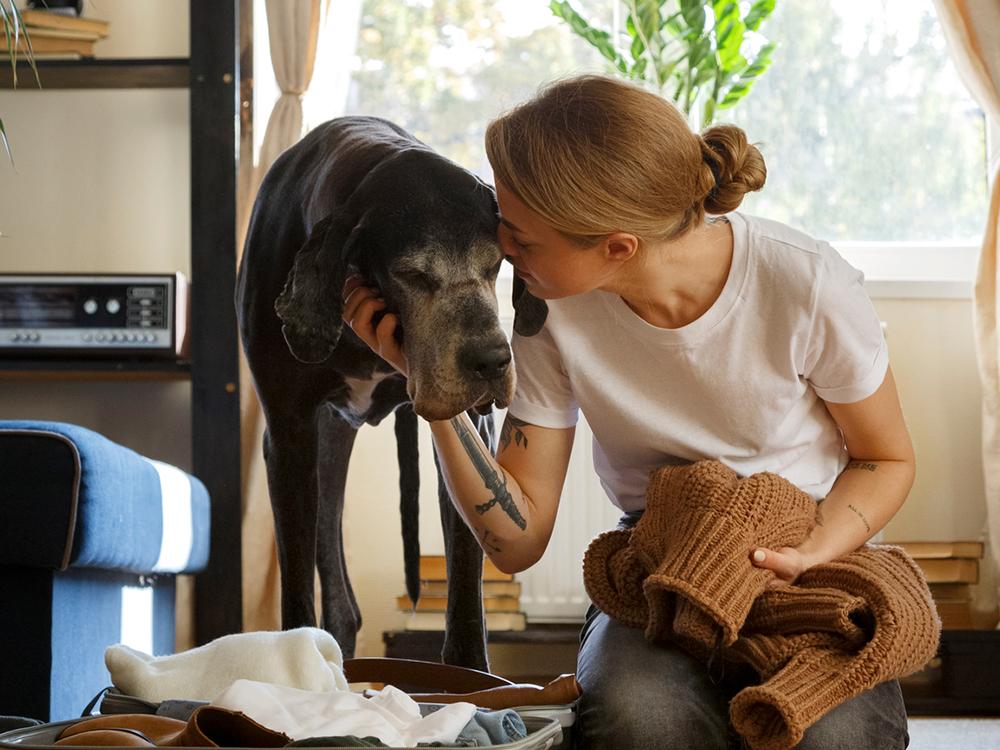
Danil Nevsky / Stocksy
9. Great Dane
Great Danes have "great" in their breed name for a reason — this breed can reach 175 pounds and 30 inches in height at the shoulder. When the Great Dane stands on their hind legs, you might find that they tower over you. The Great Dane has a reputation for being a bit of a couch potato, but this pup requires at least two brisk walks daily. Affectionate and patient, the Great Dane is good with kids and other pets, though they should be socialized during their puppy stage. And because of their short coat, the Great Dane is low-maintenance and only requires weekly brushing, though they still have a shedding season.
Weight: 110 to 175 pounds
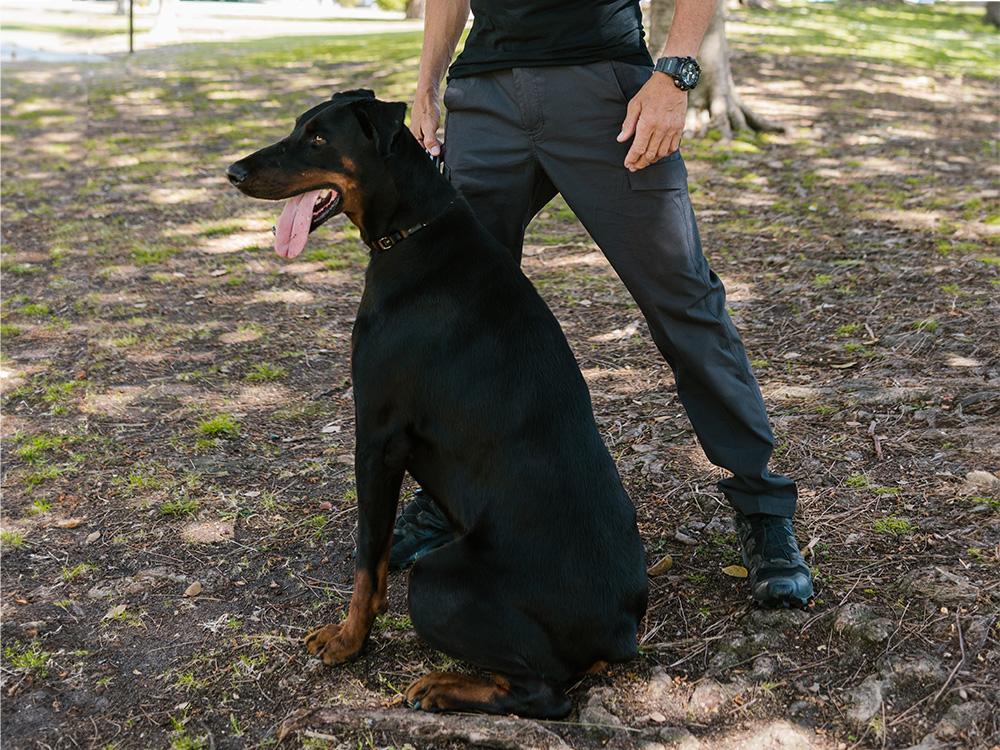
RDNE Stock project / Pexels
10. Doberman Pinscher
The Doberman Pinscher is a regal and intelligent pup who looks like they belong at the side of a king or queen with their sleek form and pointed ears. These large dogs can reach up to 100 pounds and 28 inches at shoulder height and are usually black with tan accents on their paws, faces, and chests, but they can also be red, fawn, and blue. With their athletic physique, it's unsurprising the Doberman Pinscher needs plenty of exercise. In addition to walks, these pups need space to run around and engage in activities such as agility or hiking to mentally stimulate them. Dobermans' short coats are low-maintenance — they just need to be run over by a short-bristle brush once in a while.
Weight: 75 to 100 pounds
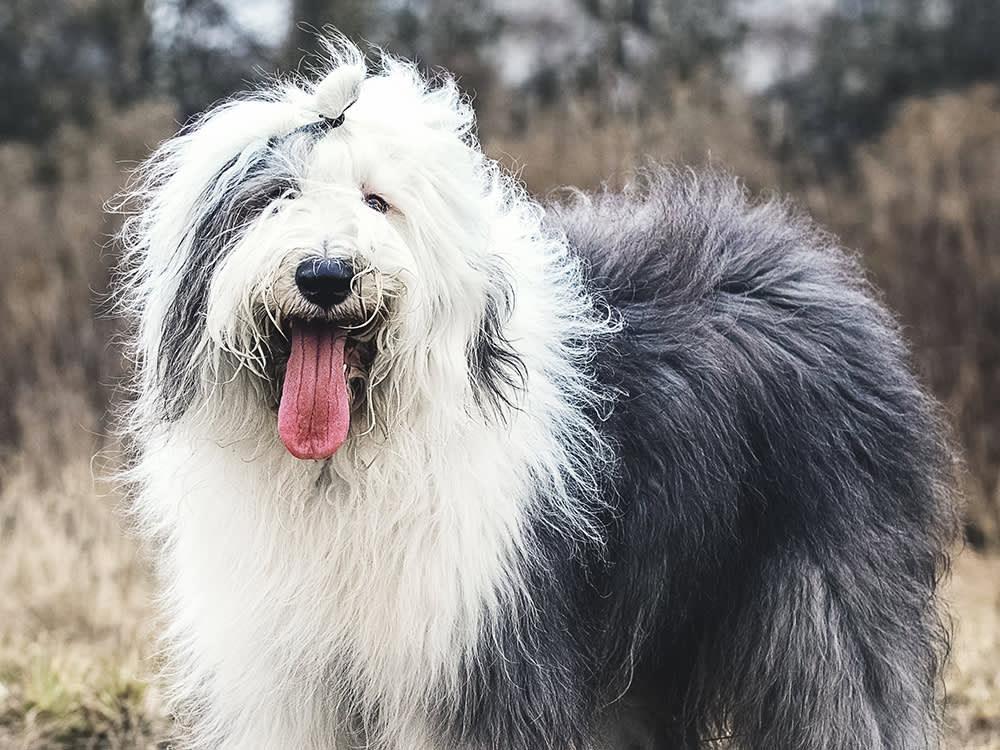
Julia Siomuha / Shutterstock
11. Old English Sheepdog
With their bear-like gait, the Old English Sheepdog might seem like they came straight out of the wilderness, but this breed, which can weigh up to 100 pounds and stand up to 22 inches at shoulder height, is a big, shaggy sweetheart. They are medium- to high-energy dogs who get bored easily, so you might need to use your creativity to find mentally stimulating activities to keep them occupied. The Old English Sheepdog's majestic fur coat requires a lot of care, including regular brushing of their double coat and monthly trips to the groomer.
Weight: 70 to 100 pounds
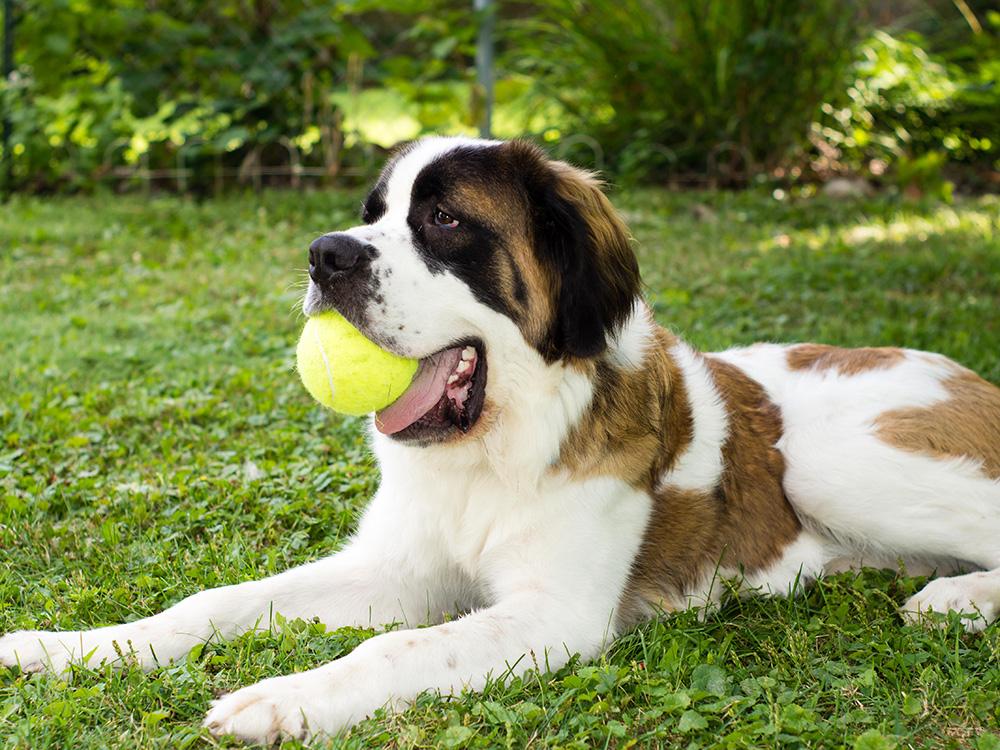
Becky Swora / Alamy Stock Photo
12. Saint Bernard
The Saint Bernard can be an imposing figure at 180 pounds and 30 inches tall at shoulder height, but this mighty dog is really a sweetheart who is good with children and other pets and is an overall people pleaser. A medium-energy breed, Saint Bernards are happiest when spending time with their families, whether it's going on a hike, a long walk, or cuddling on the couch. The Saint Bernard, which can be either long-haired or short-haired, has two big shedding seasons and requires weekly brushing outside those seasons.
Weight: 150 to 200 pounds
Special care required for giant dog breeds
Extra Space
Giant dog breeds need more room to live and be comfortable. Most giant dogs don't thrive in small apartments or crowded city streets. In some cases, these pups are bigger than humans, so it makes sense that they need more space to happily coexist with us. If possible, they should have access to yards surrounded by fences. In many cases, these breeds used to hunt prey or defend their territory or livestock, so they are prey-motivated and might run off after something if there isn't a fence to stop them.
Amount of Food
Giant dogs have big(ger) appetites than their smaller counterparts. Most dog food companies have feeding charts on their bags if you aren't sure how much food to put in their giant bowls. For example, Pedigree's dog-feeding chart advises that if your adult dog weighs more than 99 pounds, they'll need to be fed 3 ⅓ to 4 ¼ cups of food twice a day, and for every additional 9.92 pounds over 99, you'll need an additional ¼ cup. Still confused? Pedigree has a feeding calculator you can use as well. The biggest dog on this list weighs up to 230 pounds, so they'd be fed 10 cups of food per meal. Keep in mind your pup's activity level, too — adolescents who spend all day running around will need to eat more than a senior who naps the day away.
Exercise
All dogs need exercise to keep them happy and healthy. Most giant dogs require more exercise than small dogs as they tend to have working pasts as guard dogs, livestock protectors, or hunting dogs. They need to get their steps in and participate in mentally stimulating activities, such as agility, puzzles, and obedience sports. Your big buddy will need longer walks, hikes, or more yard play, so if you're committing to a giant dog, you'll need to take that into consideration.
Health Issues Big Dogs Face
We all want our pups to live forever, but it's important to keep in mind that giant dogs have shorter lifespans than medium to small-sized pups. They usually live anywhere between seven and 12 years long. They are also often more injury-prone and susceptible to hip dysplasia, arthritis, bloat, and multiple types of heart disease than smaller dogs.

Alicia Kort
Alicia Kort is a writer and editor living in Brooklyn. She’s currently the senior commerce editor at Apartment Therapy. She’s been published in StyleCaster, Electric Literature, Newsweek, Interview, Brooklyn magazine and more. In her free time, she runs, reads, and spends time with her dog-nieces, Maya and Lady, and her cat-niece, Pepper.
Related articles
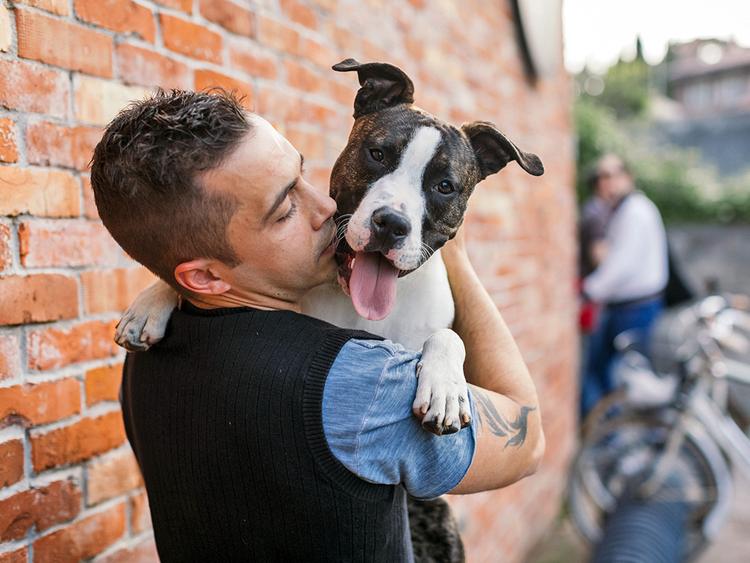
Breed Info
15 Most Loyal Dogs Who You Can Always Count On

Breed Info
10 Best Companion Dogs That’ll Always Be by Your Side
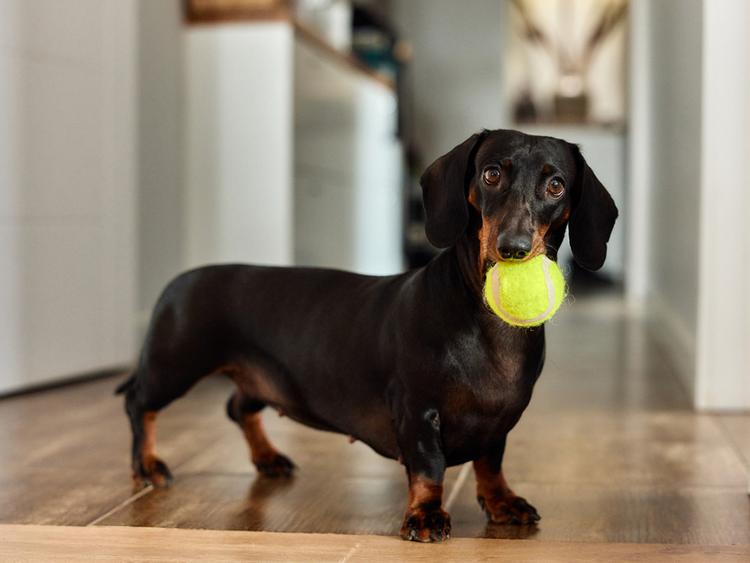
Breed Info
Why Dachshunds Are the Worst Breed (And 9 Reasons They’re the Best)
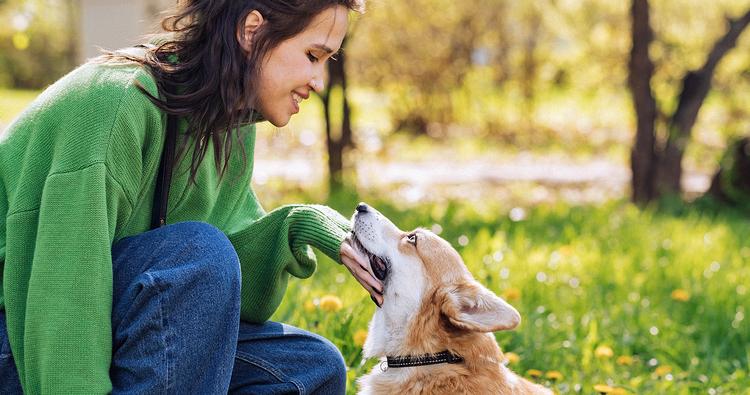
Breed Info
17 Corgi Mixes That’ll Give You Cuteness Overload
Considering a Corgi? Here’s everything you ever wanted to know about the many, many types of Corgis, including their personalities.
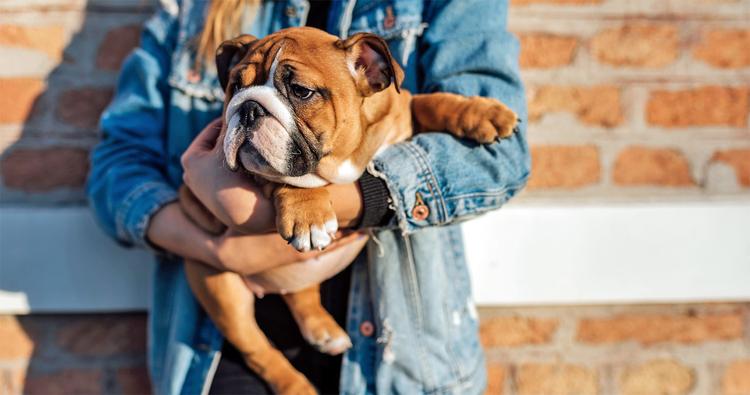
Breed Info
10 Wrinkly Dog Breeds That Give Us All the Feels
From Pugs to French Bulldogs, squishy-face dogs are pretty hard to resist. Here is your guide to these loving, adorable breeds.
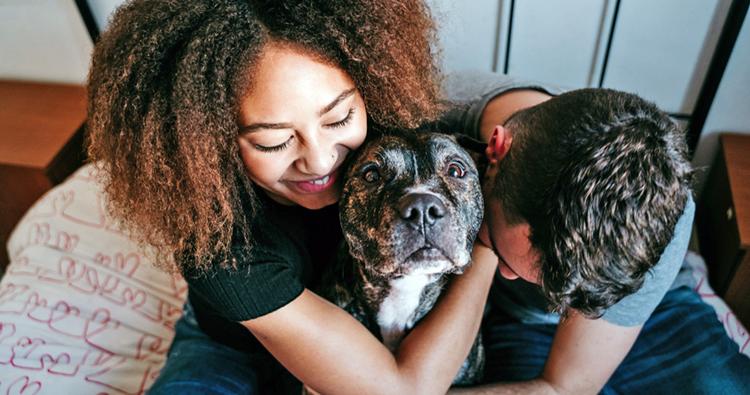
Breed Info
15 Most Affectionate Dog Breeds That Will Adore You
Want a dog that sticks to you like glue? We’ve got just the breeds for you. Below, our shortlist of some of the most adoring canine breeds.
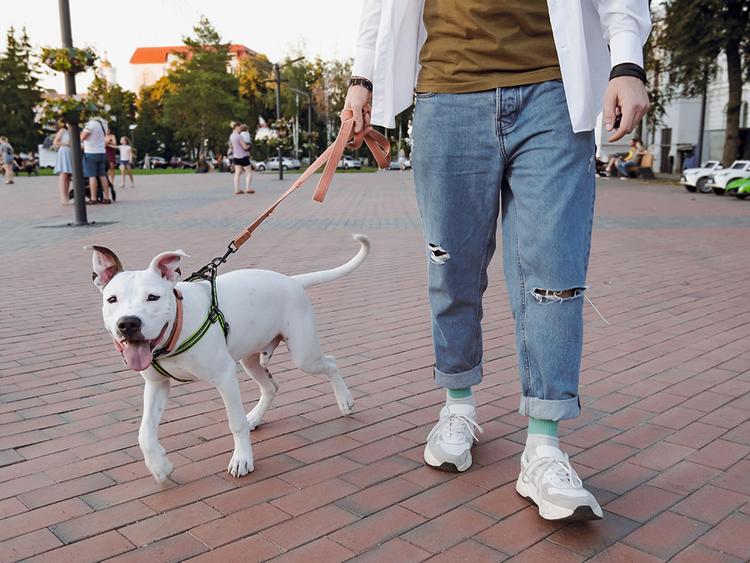
Breed Info
Best Pit Bull Names for Your Newly Adopted Dog
Try on these 75+ names for loveable pitties.
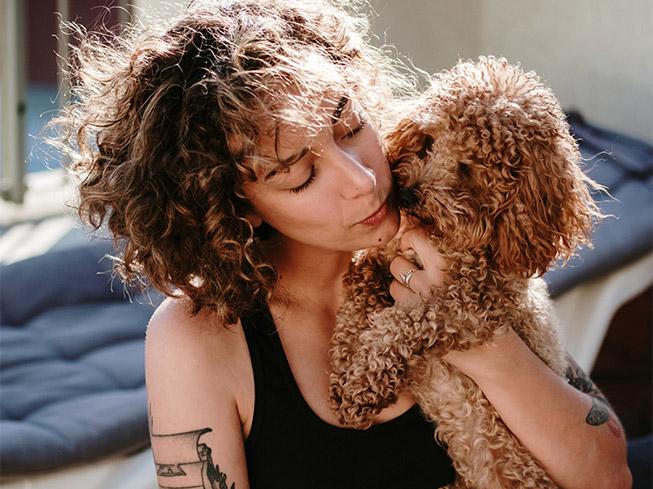
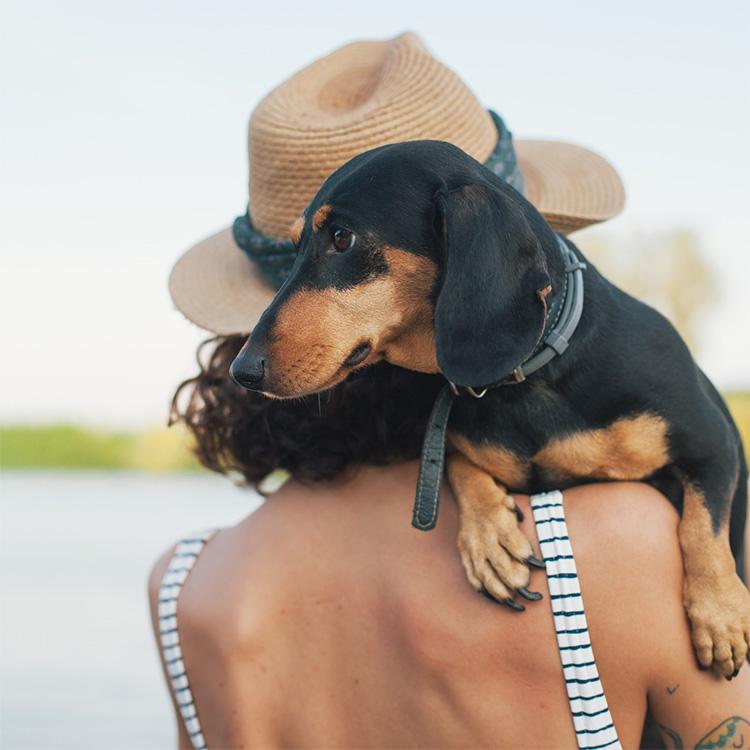
Breed Info
Types of Hound Dog Breeds + Pictures
